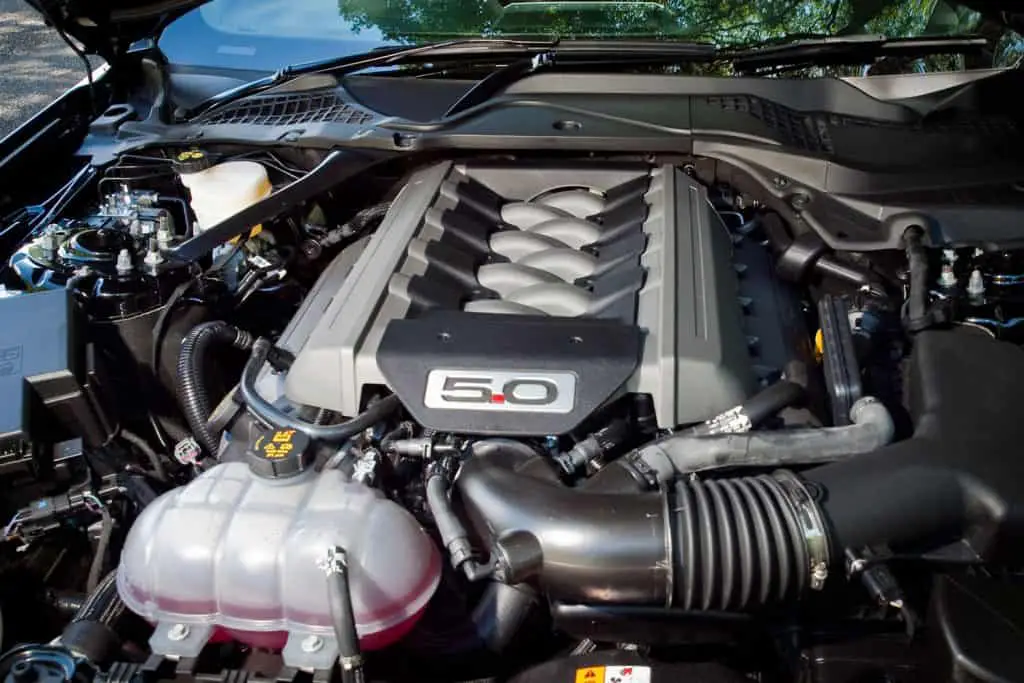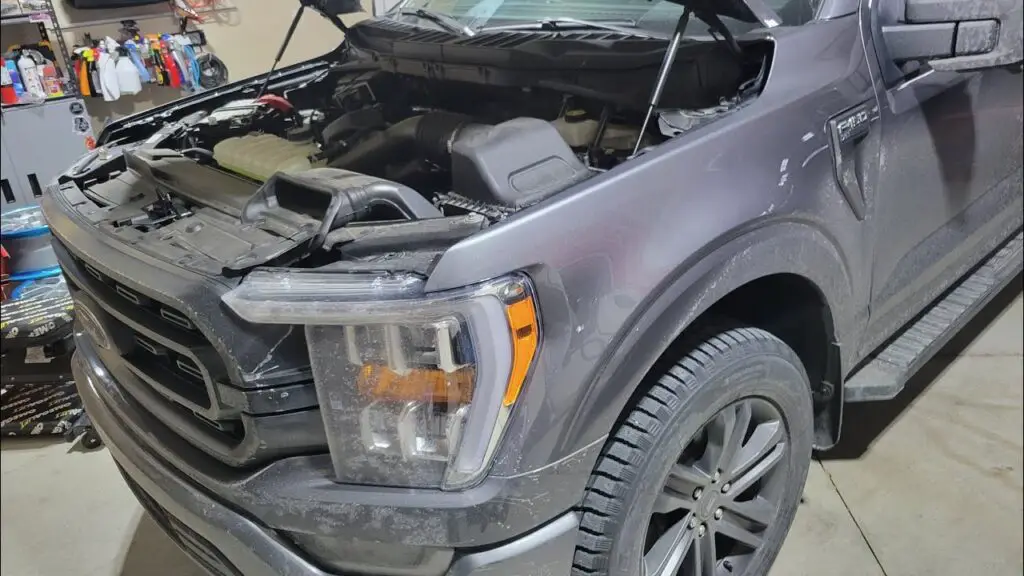Ford F150 5.0 engine problems include issues such as timing chain tensioner failure, cam phaser malfunctions, coolant leaks, excessive oil consumption, and ignition coil failures.
The Ford F-150 has long been a favorite among truck enthusiasts and commercial vehicle users alike, and its 5.0L V8 engine, also known as the Coyote engine, is widely recognized for its power and performance. While this engine offers a good balance of horsepower and torque, it isn’t without its problems. If you own a Ford F-150 with the 5.0 engine or are considering purchasing one, it’s essential to be aware of the most common engine problems that have affected this popular powertrain.
This article will explore the Ford F-150 5.0 engine problems, how to identify them, and what solutions are available to prevent or fix these issues.

Contents
Common Ford F 150 5.0 Engine Problems
While the Ford F-150 5.0 engine is generally reliable, there are some issues that have been reported over the years. Let’s take a closer look at the common problems that affect this engine, especially in certain model years.
1. Timing Chain Tensioner Failure
The timing chain tensioner is one of the critical components of the Ford F-150 5.0 engine. It is responsible for keeping the timing chain tight and ensuring proper timing between the crankshaft and camshaft. In some earlier models of the 5.0 engine (primarily 2011-2014), the timing chain tensioner was prone to failure. This could result in a noisy engine, rough idling, or engine misfires. In severe cases, a broken timing chain tensioner can lead to serious engine damage.
Symptoms of Timing Chain Tensioner Failure:
- Rattling or whining noise from the engine
- Engine misfires
- Poor acceleration or power loss
- Engine hesitation at startup
Solution: Ford has addressed this issue by improving the timing chain tensioner in later models. For affected models, replacing the timing chain tensioner is necessary. If you are experiencing symptoms of timing chain tensioner failure, it’s crucial to have the issue diagnosed and repaired by a professional as soon as possible to avoid further damage to the engine.
2. Cam Phaser Issues
The cam phaser is a component responsible for adjusting the timing of the camshaft, allowing for variable valve timing. Ford’s 5.0 engine uses cam phasers to optimize engine performance by adjusting the timing of the intake and exhaust valves based on driving conditions. Unfortunately, in some F-150 models, the cam phasers have been known to fail, especially if the oil is not changed regularly or if low-quality oil is used. The malfunctioning cam phasers can result in rough idling, knocking noises, and poor acceleration.
Symptoms of Cam Phaser Problems:
- Engine knocking or ticking noise
- Rough idle, especially during startup
- Decreased engine performance
- Poor fuel economy
Solution: If you are experiencing these symptoms, it’s recommended to have the cam phasers replaced. Regular oil changes using high-quality oil can prevent this issue, and it’s always advisable to follow Ford’s maintenance schedule to keep the cam phasers working correctly.
3. Coolant Leaks
Coolant leaks are another common problem in Ford F-150 5.0 engines. Leaks can occur from various parts of the cooling system, such as the water pump, radiator hoses, or thermostat housing. If not addressed promptly, coolant leaks can lead to engine overheating and potential engine damage. The issue is particularly common in older F-150 models (2011-2014).
Symptoms of Coolant Leaks:
- Loss of coolant without visible leaks
- Overheating engine
- Warning lights indicating coolant temperature
- Sweet smell from the engine or exhaust
Solution: Inspecting the coolant system regularly and fixing any leaks promptly is crucial for maintaining engine health. Replacing faulty components such as the water pump, radiator hoses, or thermostat housing will prevent coolant loss and overheating issues.
4. Excessive Oil Consumption
Excessive oil consumption is another issue that some Ford F-150 5.0 engine owners have experienced, particularly with certain 2018-2020 models. This problem is often attributed to the engine’s PCV (positive crankcase ventilation) system or issues with the piston rings. If oil is burning off faster than it should, it can lead to a drop in oil levels, which can result in engine damage if not addressed.
Symptoms of Excessive Oil Consumption:
- Low oil levels between oil changes
- Blue or gray smoke from the exhaust
- Oil spots under the vehicle
- Check engine light or oil pressure warning
Solution: To address excessive oil consumption, it may be necessary to replace the piston rings or PCV valve. Ford has issued technical service bulletins (TSBs) for some models to address this problem. Regularly monitoring oil levels and using the correct type of oil can help reduce the issue.
5. Ignition Coil Failure
Ignition coil failure is a relatively common issue with the Ford F-150 5.0 engine, particularly in high-mileage trucks. The ignition coils are responsible for sending the electrical current to the spark plugs, ensuring the proper combustion of fuel in the engine. When these coils fail, the engine may misfire, run rough, or experience a loss of power.
Symptoms of Ignition Coil Failure:
- Engine misfires
- Rough idle or hesitation during acceleration
- Poor fuel economy
- Check engine light or misfire codes
Solution: Replacing the faulty ignition coil(s) is the solution to this problem. If you are experiencing misfires or rough idling, it’s important to have the ignition coils checked and replaced as necessary.

Preventive Maintenance Tips for the Ford F 150 5.0 Engine
Preventive maintenance is the best way to avoid costly repairs and ensure your Ford F-150 5.0 engine runs smoothly. Here are some tips to keep your engine in top shape:
- Regular Oil Changes: Use high-quality oil and replace the oil and filter regularly, as recommended by Ford. This helps prevent many engine issues, such as cam phaser malfunctions and excessive oil consumption.
- Check and Replace Spark Plugs: Spark plugs should be checked and replaced as necessary to maintain smooth engine performance and fuel efficiency.
- Monitor Coolant Levels: Regularly inspect the cooling system and ensure there are no leaks or signs of overheating. Replace faulty components, such as hoses or the radiator, as needed.
- Replace Timing Chain and Tensioner: The timing chain and tensioner should be inspected periodically, especially in older models, to avoid timing issues.
- Use Quality Fuel: Using top-tier fuel with adequate detergent additives can help prevent carbon build-up in the combustion chamber and fuel system.
Frequently Asked Questions
Here are some FAQs about Ford f150 5.0 engine problems
1. What are the common issues with the Ford F-150 5.0 engine?
Common problems include timing chain tensioner failure, cam phaser issues, excessive oil consumption, coolant leaks, and ignition coil failure.
2. How do I know if my Ford F-150 has cam phaser issues?
Symptoms include rough idling, knocking noises, and decreased engine performance, especially at startup.
3. Can excessive oil consumption damage my Ford F-150 engine?
Yes, excessive oil consumption can lead to engine damage, including low oil levels, which may result in engine overheating or misfires.
4. How can I prevent timing chain tensioner failure in my F-150?
Regular oil changes with high-quality oil and adhering to Ford’s maintenance schedule will help prevent tensioner issues.
5. Is coolant leakage a serious issue in the F-150 5.0 engine?
Yes, coolant leakage can cause engine overheating and lead to severe engine damage if left unaddressed. Regular coolant system checks are essential.
Conclusion
The Ford F-150 5.0 engine, while powerful and reliable, is not without its issues. Problems like timing chain tensioner failure, cam phaser malfunctions, coolant leaks, and excessive oil consumption can occur, particularly in certain model years.
Regular maintenance and timely repairs are key to preventing these issues and ensuring the longevity of your engine. By staying on top of the engine’s health and following Ford’s recommended maintenance schedule, you can keep your F-150 running smoothly for years to come.